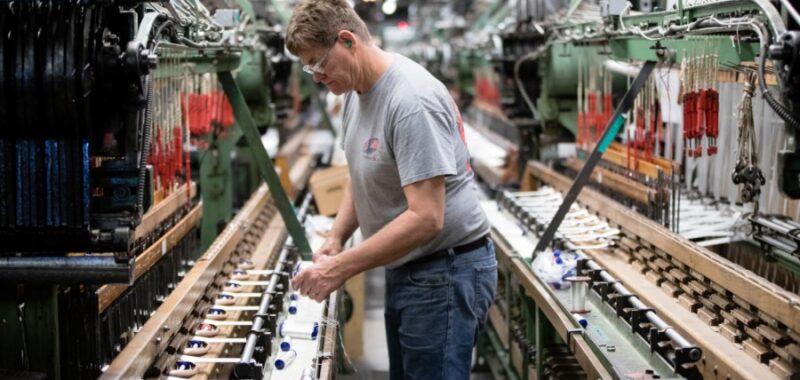
Contrary to what you hear from most D.C. Beltway politicians and national media pundits, we do still make things in America. Veronique de Rugy, an economist and a senior research fellow at George Mason University’s Mercatus Center, pointed out in a recent commentary that the inflation-adjusted value of U.S. industrial production — that is, manufacturing, mining and utilities combined — “is higher than ever.”
Real domestic manufacturing alone is up 177 percent — nearly triple — from 1975. And since 1994, the U.S. output of “computer and electronic products” specifically has grown by 1,200 percent. Motor vehicle output is up “well over 60 percent.”
U.S. Labor Department data show nationwide payroll manufacturing employment was roughly 12.8 million in 2024. That’s substantially higher than in 2009 or 2014, and slightly higher than in 2019, the last year before COVID-19 hit.
U.S. Commerce and Labor Department data combined show the average annual compensation (including the value of noncash benefits) for an American factory employee is more than $100,000 a year. So there clearly is a future for good-paying factory jobs in our country.
But the data also show state labor policy matters a lot in determining where net new job creation happens.
From 2014 to 2024, manufacturing payroll employment grew by roughly 530,000, or 10.4 percent, in the 23 states that had right-to-work laws prohibiting the termination of employees who refuse to join or bankroll a union for that entire decade. Meanwhile, in the 23 states that lacked right-to-work protections for the whole period in question, aggregate manufacturing jobs fell by 0.2 percent, or roughly 12,000. (The four states that changed their policies during that period are excluded from this analysis.)
The correlation between right-to-work status and superior growth in manufacturing jobs is robust. The seven states with the greatest percentage gains in manufacturing payrolls over the past decade (Nevada, Florida, Utah, Arizona, Idaho, Georgia and South Carolina) are all right-to-work states.
Site selection experts whose career success depends on giving corporations good advice about where to make job-creating investments have confirmed again and again that right-to-work states are superior locations for new factories and expansions alike. In a 2023 interview, for example, Boyd Co. owner John Boyd observed that right-to-work laws have always been “a recruiting tool for companies.”
It’s no mystery why, without right-to-work protections, employees are more likely to be forced into one-size-fits-all union contracts that foster work stoppages, wasteful work rules, job featherbedding and a union-label “hate the boss” mentality.
Just a few years ago, when they were still Harvard graduate students, economists Matthew Lilley and Benjamin Austin collaborated on research aimed at determining to what extent the diverse economic benefits associated with right-to-work laws are actually caused by Right to Work itself. Lilley and Austin, who today are professors of economics at Duke and Harvard, respectively, focused their attention on “adjacent pairs of counties” in different states where one county had right-to-work protections for employees and the other did not.
The Lilley-Austin analysis showed that right-to-work laws boost overall employment substantially, and that their impact is particularly strong in the manufacturing sector, which has a long history of heavy unionization.
As Lilley reported in a 2023 follow-up paper for the Manhattan Institute, among the 373 neighboring counties he and his partner had analyzed, there was an average “3.23 percentage-point increase in the manufacturing share of employment” on the right-to-work side of the border.
He then noted: “This difference is substantial, equivalent to a 28 percent increase in manufacturing employment” in right-to-work counties relative to their forced-unionism neighbors.
Practically all elected officials in the U.S. claim to support the creation of new manufacturing jobs and the retention of current ones. But the many Big Labor politicians in Washington, D.C., who support the elimination of state right-to-work laws and the expansion of union bosses’ forced-unionism privileges to all 50 states are objectively in favor of the destruction of good-paying manufacturing jobs.
Stan Greer is senior research associate for the National Institute for Labor Relations Research.

